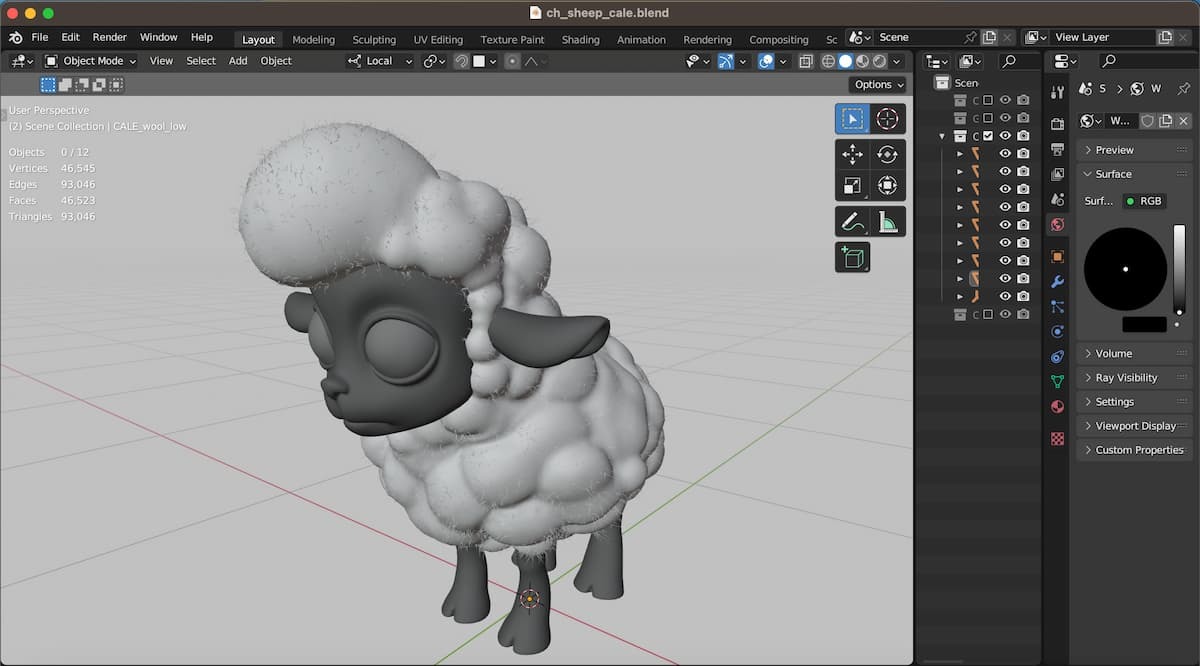Empowering the Next Generation: Teaching Blender in High Schools for Creativity and Innovation
May 30th 2023

What is Blender 3D?

Benefits of teaching Blender in high schools.
As a free and open-source software, teaching Blender 3D can provide students with a number of benefits; learning an adaptable skill, and the opportunity to develop their creativity and collaboration skills
Free and open-source
Blender is free and open-source software, which means that it is accessible to all students, regardless of their financial situation. This further lowers the barrier to entry and mitigates gaining administrative budget approvals.
Blender can be downloaded for free, and installed on machines running Linux, Windows, and or Mac Operating systems.

Collaboration and Teamwork
Blender can be used to encourage collaboration with fellow students on projects. This helps students to develop teamwork and communication skills that mimic real-world scenarios.
Instructors are able to replicate studio environments within the classroom to further prepare students to be career ready and have experience working and relying on other skill sets in a production pipeline.
Problems solving and creative thinking
Creativity is one of the most sought-after skills by employers in the job market. Creativity doesn’t just apply to painting and drawing. It’s interwoven throughout our entire professional and adult lives inspiring innovation across all industries.
Students will learn there are multiple ways to approach problem-solving.
Job opportunities
Available jobs are not only tied to game development and film production, with the advances in technology 3D skills are needed in nearly every industry. From the medical field, architecture, and space flight to name a few.
Additionally, students are empowered to get started now in their careers through the way of freelancing while in school, or creating and selling Blender assets on the Blender Market.
Tips for implementing Blender at your high school.
The fact that Blender is free is a great reason to adopt Blender in the classroom. Beyond the accessibility, there are a few other factors to consider.

Understand Hardware requirements for Blender.
Blender can be installed on Windows, Linux or OSX machines. How much hardware you’ll need will vary based on what you intend to create with Blender. For most introduction and fundamental courses meeting the minimal hardware requirements will be sufficient for most instructors.
For intermediate and advanced 3D classes I’d recommend seeking out the recommended hardware requirements for Blender. The level of detail and complicated calculations increase as models and simulations become more complex.
Minimum computer requirements to run Blender: 64-bit quad-core CPU with SSE2 Support.
- 8 GB RAM, Full HD Display
- Mouse, TrackPad, or Pen & Tablet,
- Graphics Card with 2GB RAM, OpenGL 4.3
- Less than 10 years old (generalizing)
Read more about recommended hardware recommendations.
Resources and places to learn Blender.
I’ve found the best way to learn something is to teach it. The Blender community is full of free and paid educational resources to help you get started with the software, so you can help others start their Blender journey.
- Blender training on the Blender Market
- Educators and students save 50% here off of CG Cookie
- Youtube Blender tutorials
At CG Cookie, we love helping instructors get up to speed with Blender and connect and collaborate with fellow peers. We have two Blender courses streaming for free to give you a fundamental understanding of the software by tackling the Blender basics, and then moving to create your very first project with Blender.
Additionally, there is a free Blender Discord server to join to ask Blender questions and get help from fellow 3D artists.
Developing a curriculum
It can be overwhelming to learn new software and develop a curriculum. To help you navigate this, CG Cookie has released a free Blender teaching guide. This guide covers the history of Blender, classroom tips, example rubrics, and suggested projects for students.
When creating your Blender curriculum it’s important to manage expectations and keep your student in mind. Eager students will believe they’re going to create the next Pixar film while in your class, while it’s more realistic to model a single object.

Furthermore, it’s vital to set them up for success and more critically to instill the feeling of success early. As a complicated endeavor students can get discouraged quickly with the steep learning curve in creating CG artwork.
To combat discouragement, build consumable projects students can build off of. Uplifting them to the more complicated projects towards the end of the class.
Read the Blender educator's guide
Chromebooks with Blender
Chromebooks are popular in schools and while it’s not impossible to run Blender on them, it can be challenging depending on the hardware specs and security policies put in place.
Chromebooks are typically not built to run native 3D applications. They’re more commonly built for internet browsing and light word processing.
If you have the ability to adjust the security settings you may be able to run Blender on a Chromebook.
_____
If you’re debating adopting Blender in the classroom and have questions we’re happy to answer them. Simply email us at [email protected] or ask in the community forum.
Happy Blending!
Wes
